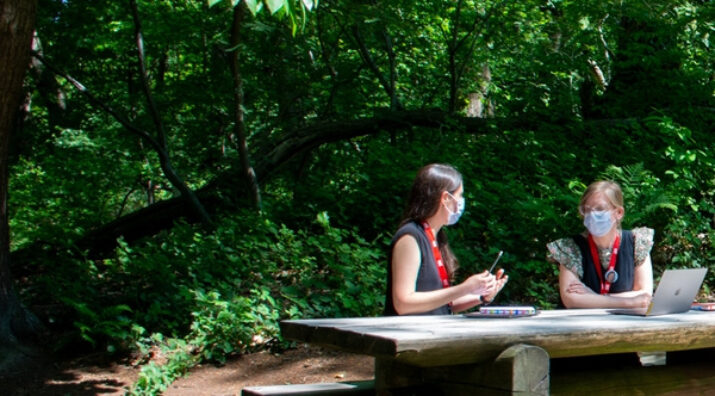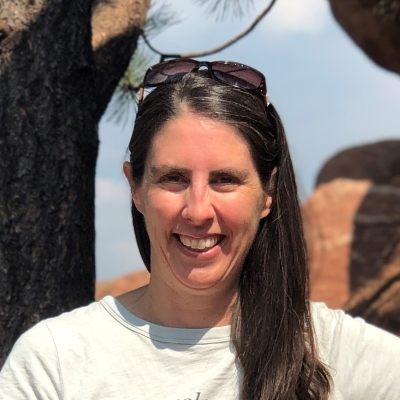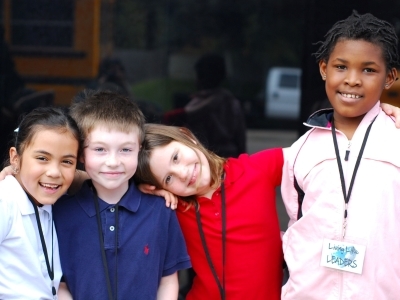Teachers Can Start Leading Their Schools Today
Topics

When educators design and create new schools, and live next gen learning themselves, they take the lead in growing next gen learning across the nation. Other educators don’t simply follow and adopt; next gen learning depends on personal and community agency—the will to own the change, fueled by the desire to learn from and with others. Networks and policy play important roles in enabling grassroots approaches to change.
Teachers: You can lead without a leadership position, and you can start inspiring your colleagues to innovate today with these three actions.
As teachers, making an impact beyond our classroom of students can be both rewarding and challenging. Yet, it is a goal many of us hope to achieve. We fall in love with the idea of leading educators to maximize our impact on tomorrow’s future. Unfortunately, we don’t always know how to do it in our current role.
People desire different aspects of school leadership. Some want to be instructional leaders, showcasing pedagogy, while others want to impact curriculum design or lead professional development. Formal leadership systems and dynamics vary greatly in education. Everyone leads differently; we mimic what we see, do what we know, and often feel compelled to work within the systems already in place.
Some schools have middle-level leadership roles and others don’t. The good news is that you can lead without a leadership position and you can start today.
Over the last couple of years, I’ve taken risks in my pedagogy and implemented self-paced, mastery-based units using the Modern Classroom Project (MCP) model. My fifth and sixth grade students have been the main benefactors. I’ve innovated in instructional and formative assessment delivery strategies and pivoted between in-person and virtual teaching. I have found success meeting my students' needs more often even in these uncertain conditions the pandemic has caused. At the same time, I have inspired colleagues around me to take disruptive action in their own learning spaces too. I am leading by example.
You can become a leader too by…
1. Learning
Learn something new. When you are open to learning new things yourself, you can authentically model what learning can look like and feel like. Practice what you preach in your own classroom. Learning new things not only builds your empathy muscles but also your ability to design learning differently. Falling in love with learning allows you to see yourself as a learner first and an educator second.
When you intentionally seek out and participate in an enjoyable learning experience, you will learn what methods best lead you to action, understanding, or knowledge. I’m deep in this spiral of new learning right now. I am writing my first book (personal) and I am offering a blended learning methodology to my fifth grade students (professional). The knock-off effects seem to be endless.
So, how do you learn best? What do you want to learn about? Based on your new learning and reflection can you disrupt something that will benefit your students? Will you try out a new instructional model or method of teaching? How about a new morning routine that serves you first? The topic doesn’t matter, but your choice does.
2. Sharing
Share what you’ve learned. With gratitude, talk about what it is that you are doing, failing forward with, and finding success in. Reflect upon and talk about the joy that this new learning has given you. Make your ideas contagious. Leave your work in collaborative spaces, team drives, or your LMS for others to use. A sixth grade colleague of mine is teaching math for the first time in five years. She was thrilled that I left everything for her to use and edit freely. She has found the benefits in making the work even better, differentiating in units she is unfamiliar with, and is now meeting her diverse group of students more effectively.
When you model your learning, people around you see your success and follow, voluntarily begin to collaborate with you, or ask to use your lessons. Vulnerably asking your colleagues for feedback as well can serve two purposes. One, improving your work and two, modeling your learner-first disposition. Make what you are doing visible to those around you by talking aloud about your risk taking and disruption. Make your practice and learning visible on and offline.
3. Collaborating
Find others to collaborate with. Once your colleagues are inspired they will want to join you. Your hard work and dedication becomes what people want to do and soon you find that working together further enhances the learning experience for everyone. Collaborating improves the outcome for all involved. In the short time that I have been using the MCP self-paced teaching model more than a handful of elementary colleagues have met with me and given it a go in their own classrooms. A colleague on my current fifth grade team has even taken the lead on building our next math unit! This leaves me on the sideline coaching and giving feedback based on how my students are responding to the learning.
This three step process will lead you into the leadership action that you are looking for. Learning, sharing, and collaborating can improve your life and make an impact. Be the change you want to see. Get out there and lead today, for tomorrow!
Photo at top: The author collaborating with a colleague in their school's forest classroom; courtesy of the author.




